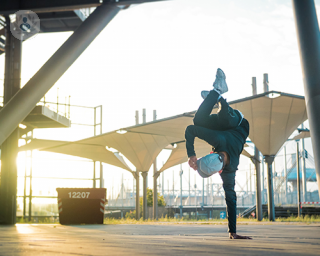Legamento scafolunato
What is the scapholunate ligament?
The scapholunate ligament is a ligament of the wrist and it is very important for carpal stability. This ligament provides the wrist the strength to withstand loads without giving way, as well as flexibility and a range of motions. The scapholunate ligament is made up of dorsal, proximal and palmar segments which connect the scaphoid and lunate bones.
Injuries to the scapholunate ligament are the most common cause of wrist instability, and they are the most commonly injured carpal ligament. Injuries to the scapholunate ligament often occur in sporting activities, for example, when someone falls on an outstretched hand in an attempt to catch their fall.

Prognosis of a scapholunate ligament injury:
When the scapholunate ligament is injured, if they are not properly diagnosed and treated, they can lead to functional problems and progressive osteoarthritis. Treatment can restore function and prevent further damage to the carpal joint.
What are the symptoms of a scapholunate ligament injury?
When an injury occurs to the scapholunate ligament, usually the scaphoid bone will flex forward, whilst the lunate bone will extend backwards. This can lead to a gap forming between the two bones. Usually, a scapholunate ligament injury will be a partial or complete tear of the ligament. A partial tear is a mild sprain, whereas, a complete tear means the entire ligament has torn apart. A scapholunate ligament injury is very commonly associated with a scaphoid fracture or lunate dislocation.
Symptoms of a scapholunate ligament injury include:
- Wrist pain, especially when attempting to put load on the injured wrist (e.g. trying to do a push-up)
- Clicking sound in the wrist
- Wrist instability and weakness
- A weak and painful grip
- Reduced wrist mobility
- Some swelling in the wrist
Medical tests to diagnose a scapholunate ligament injury:
It is not uncommon for scapholunate ligament injuries to go undiagnosed for a while after the initial accident. This is because sometimes not much pain is felt initially, and people will seek treatment when this pain continues, with no improvement. In order to diagnose a scapholunate ligament injury, the specialist will perform a physical examination to check for swelling and tenderness. Sometimes a Watson scaphoid test will be performed to help with this assessment. This involves the patient bending their wrist towards their little finger and then the specialist applying pressure to the palm side of the scaphoid bone. When performed, if the scaphoid bone is loose, returning the wrist to its normal position will cause the scaphoid bone to ‘clunk’ back into place. X-rays and an MRI scan may also be needed to assess the injury.
In a small number of cases, if a diagnosis is still not confirmed following the above tests, an arthroscopy may be performed to assess the need for surgical intervention.
What are the causes of a scapholunate ligament injury?
A scapholunate ligament injury most commonly occurs during sporting activities when an athlete falls and uses their outstretched hand to their fall. Injuries to the scapholunate ligament occur when the wrist is overloaded and hyperextended.
Can a scapholunate ligament injury be prevented?
Whilst sporting accidents or falls or often impossible to predict or prevent, if you do fall onto an outstretched wrist, it is worthwhile going to see a doctor to ensure that it is appropriately diagnosed and treated. This can ensure that the injury and pain do not progress.
How is a scapholunate ligament injury treated?
For milder scapholunate ligament injuries, conservative treatments can be used and it might be necessary to wear a supportive sling or splint for a few weeks to ensure that it is rested and immobilised. NSAIDS (e.g. ibuprofen) and over-the-counter painkillers can be used to manage pain and swelling, as well as applying ice. Physiotherapy is needed to help restore range of motion, flexibility and strength.
For more severe scapholunate ligament injuries, surgery will be needed if conservative measures have been unsuccessful or if there are signs of progressive osteoarthritis in the joint. Surgery may involve a wrist arthroscopy technique, but it can also be done with open surgery. Surgery is usually a day case procedure, but it will require general anaesthesia. Surgery will aim to restore wrist stability, enabling physical rehabilitation.
Which type of specialist treats a scapholunate ligament injury?
An orthopaedic surgeon would treat scapholunate ligament injuries, but you can choose to see hand and wrist orthopaedic surgeons who specialise in wrist problems.

